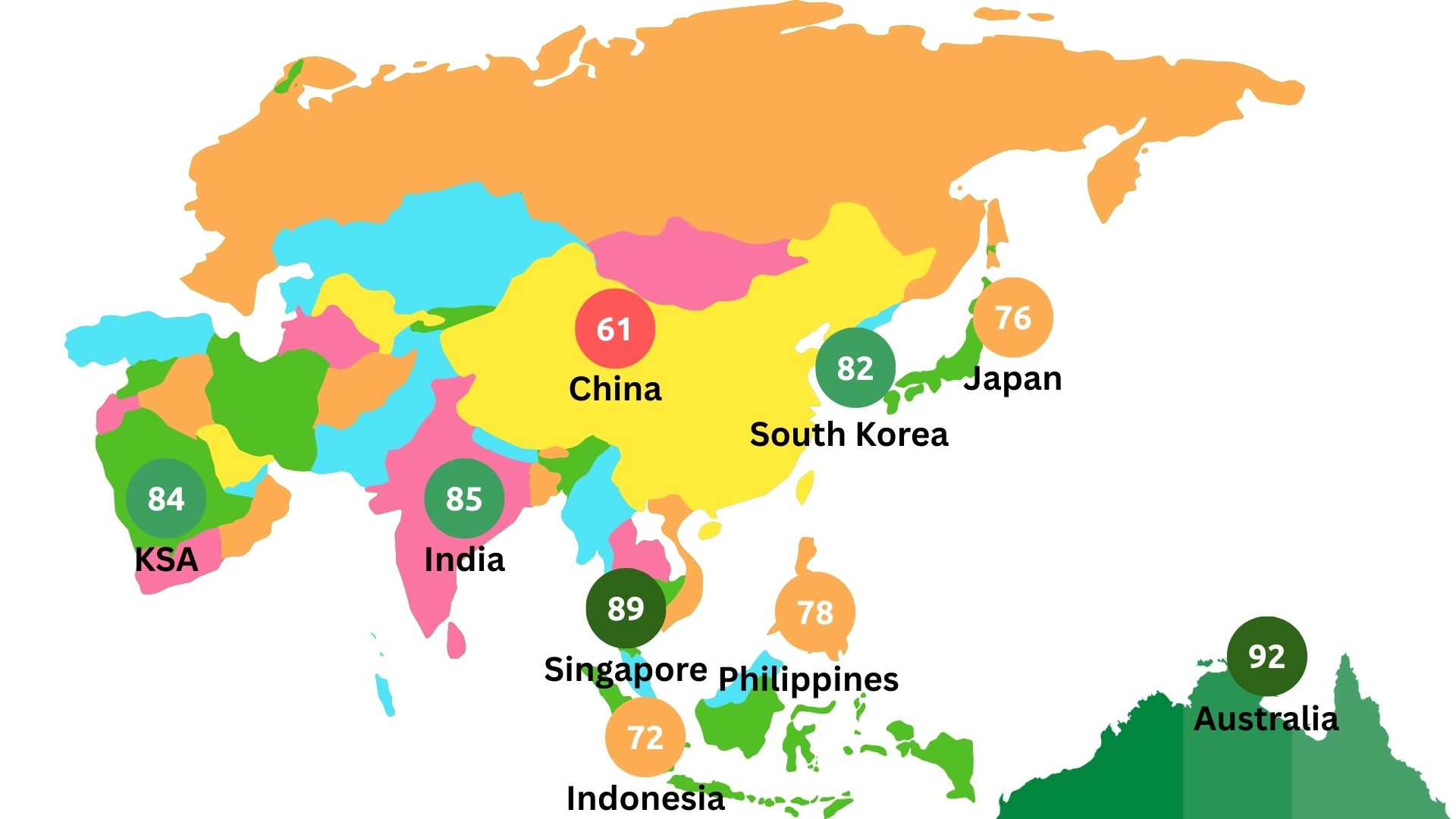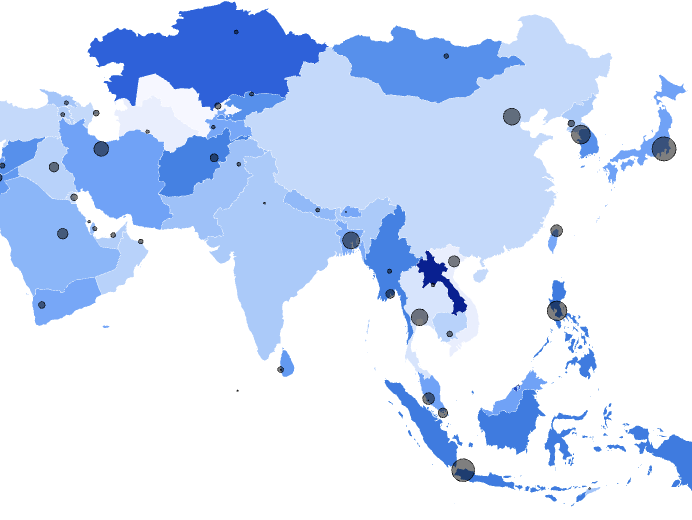There’s a recurring illusion in American go-to-market strategy: the belief that “APAC” is some cohesive region that can be understood, modeled, and penetrated with the same data strategy used in the US or Europe. It’s a comforting fiction. It’s also the reason so many otherwise sophisticated SaaS companies watch their SDR output collapse the minute they try to scale into Japan, Korea, Singapore, or Australia.
The pattern is always the same.
SDRs suddenly can’t reach anyone.
Marketing coverage evaporates.
Account hierarchies splinter into incomprehensible webs of subsidiaries and local entities.
Data vendors shrug and say, “APAC is tough,” as if the difficulty is inherent, not engineered through the limitations of their own datasets.
The uncomfortable truth is that APAC isn’t “tough.”
It’s simply incompatible with static data.
And that is why LeadGenius built something fundamentally different.
APJ Isn’t a Region. It’s 13+ Distinct Data Realities.
Spend time with revenue leaders responsible for APJ, and you quickly realize they’re not managing a region; they’re managing a geopolitical mosaic. Japan’s corporate structures bear no resemblance to Australia’s. Korea’s data availability looks nothing like Singapore’s. India, Hong Kong, Indonesia—each behaves like its own information ecosystem.
The problem is not just language, or culture, or regulation. It’s architecture—unique filing systems, heterogeneous ownership structures, uneven digital footprints, and wildly different norms for how information appears online. Static datasets, built for American and Western European patterns, simply don’t have the surface area to capture reality elsewhere.
If you assume “APAC” behaves like the United States with time-zone differences, you will fail. Most companies do.
LeadGenius decided to approach the problem from the other direction: by treating every country as its own data universe.

A Country-By-Country Model, Not Global Guesswork
Instead of building one monolithic data lake and attempting to apply it universally, LeadGenius built country-specific crawlers—custom data pipelines tailored to the distinct information environments of Japan, South Korea, Singapore, Australia, India, the Philippines, Hong Kong, Malaysia, Taiwan, Indonesia, Thailand, and New Zealand.
These crawlers understand the rules of their own terrain. They are trained on local-language URLs, local hosting behaviors, regional business registries, country-specific hiring sites, developer communities, naming conventions, and disclosure practices. What emerges is a structural understanding of how each market reveals itself digitally.
The payoff is not abstract. When Google tested LeadGenius against ZoomInfo and Cognism across 13 APJ markets, LeadGenius delivered more than 20 percent additional reachable contacts in 12 of them. That wasn’t an accident. It was the result of architecture that matches reality rather than projecting a US-centric model onto it.
LinkedIn Isn’t Where APJ Works — So We Stopped Pretending It Was
There’s a persistent Western assumption that LinkedIn is the global map of professional identity. In APJ, that assumption collapses immediately. LinkedIn penetration is extremely low in Japan and Korea, higher in India and Indonesia, and inconsistent across Southeast Asia. A dataset built primarily from LinkedIn will inevitably misrepresent the region.
LeadGenius expanded outward instead of trying to force APJ inward.
Data pipelines were built across GitHub, where technical ownership emerges organically through repositories and commits. StackOverflow exposes expertise and technology choices. Kaggle reveals the analytics and machine-learning ecosystems. Reddit surfaces communities, sentiment, and role clusters that rarely appear in corporate directories. Local job boards reveal hiring signals that say more about a company’s true operations than any org chart ever could. Local-language forums offer high-resolution visibility into niche verticals that rarely surface on English-dominant platforms.
The result is not a longer list of names—it’s a truer map of who actually owns tools, budgets, integrations, and workflows.
These are the people SDRs need. And in APJ, they exist outside the American professional internet.
The Hardest Problem in APJ: Knowing Where People Actually Are
Here’s the part most vendors won’t say out loud: a massive percentage of “APJ contacts” in US datasets are not actually in APJ at all. They’re US or EMEA-based employees attached to a parent headquarters in Tokyo or Singapore. This is why SDRs think they’re calling someone in Japan and end up reaching a voicemail in California.
LeadGenius solved this by building a location-intelligence engine that triangulates actual, lived geography—where a person works, sits, lives, and buys.
It evaluates local phone lines, device settings, employer pages, IP patterns, time-zone behavior, local-language signals, regional hiring activity, and digital-footprint overlap. The goal isn’t to guess; it’s to infer with high-confidence the physical and professional reality of a contact.
This produces something the industry has almost never had: genuine APJ contact accuracy.
Regional Signals That Reveal Markets Before They Emerge
Another mistake Western data companies make is assuming that global signals—US funding announcements, English-language press releases, or standardized company filings—are enough to understand APJ. They’re not.
LeadGenius built regional pipelines that capture the sources where APJ markets actually reveal themselves: India’s local funding ecosystems, Singapore’s government registries, Australia’s disclosure systems, Indonesia’s e-commerce surfaces, regional hiring spikes, and country-specific infrastructure adoption.
These signals expose new subsidiaries, emerging development teams, new revenue centers, in-market GTM teams, and early indicators of expansion long before Western datasets notice anything is happening.
APJ isn’t opaque; most vendors simply aren’t looking in the right places.
Why SAP and Amazon Lean on LeadGenius in APJ
SAP doesn’t need a “list.” They need a living map of who is building, hiring, or buying across more than a dozen countries that each follow their own logic. For SAP’s SDR and marketing teams, LeadGenius provides accurate contact-based location intelligence, deep technographic ownership signals, and region-specific insights that show not just who to target, but when.
Amazon uses LeadGenius to expand seller recruitment in South Asia, target mid-market and SMB segments across Singapore and Australia, and discover net-new markets where LinkedIn structurally underrepresents local business activity. They rely on regional language signals, hiring indicators, and digital commerce footprints to scale faster than Western datasets can keep up.
The pattern across both companies is clear: if you want US-quality precision in APJ, you cannot rely on US-built datasets.
Static data lakes give you static coverage. APJ requires something else entirely.
The Real Problem Isn’t Data. It’s Visibility.
Companies often assume their APJ pipeline struggles come from SDR execution, message-market fit, or cultural nuance. But under the surface, most of the constraints are structural: if you can only see a fraction of the actual buyers in a market, your SDRs are not underperforming—they’re operating blind.
When APJ visibility improves, performance follows immediately. Meeting rates rise. Pipeline expands. Cost per meeting drops. New account segments appear. Regional marketing campaigns reach audiences that were previously invisible. Partner ecosystems become more productive. The TAM expands as quickly as the data does.
Google learned this. SAP and Amazon see it every quarter. And the fastest-growing SaaS companies entering APJ for the first time are starting to realize that their data vendors were never built for the markets that matter most.
The companies that will win next year are not the ones with the cleverest messaging. They’re the ones with the clearest view.
The Future of APJ GTM Will Be Built, Not Bought
The era of generic, universal data lakes is ending. APJ is accelerating that shift. The region rewards companies that build systems tailored to local realities—real-time, signal-driven, market-specific, and deeply integrated with the digital surfaces where APJ business actually happens.
This is why Google chose LeadGenius.
Why SAP and Amazon keep scaling with LeadGenius.
Why so many American GTM teams are quietly revising their playbooks for 2025.
If you want to win in APJ, you need data that reflects APJ.
Not projections. Not approximations. Not headquarters metadata masquerading as regional truth.
LeadGenius is the only company that has built that visibility at scale.




